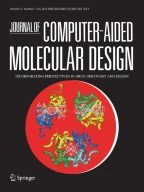Summary
In this paper a database of atomic residual charges has been constructed for all the molecular fragments defined previously in a combinatorial search of the Cambridge Structural Database. The charges generated for the atoms in each fragment are compared with charges calculated for whole molecules containing those fragments. The fragment atomic charges lie within 1 S.D. of the mean for 68%, and within 2 S.D. for 91%, of the atoms whose charges were computed for whole molecules. The actual charges on any atom are strongly influenced by the adjacent connected atoms. There is a large spread of atomic residual charge within the fragments database.
Similar content being viewed by others
References
Chau, P.-L. and Dean, P.M., J. Comput.-Aided Mol. Design, 6 (1992) 385.
Chau, P.-L. and Dean, P.M., J. Comput.-Aided Mol. Design, 6 (1992) 397.
Abraham, R.J., Grant, G.H., Haworth, I.S. and Smith, P.E., J. Comput.-Aided Mol. Design, 5 (1991) 21.
Momany, F.A., McGuire, R.F., Burgess, A.W. and Scheraga, H.A., J. Phys. Chem., 79 (1975) 2361.
Giessner-Prettre, C. and Pullman, A., Theor. Chim. Acta, 25 (1972) 83.
Dobosh, P.A., Q.C.P.E., 9 (1968) program number 141.
Author information
Authors and Affiliations
Rights and permissions
About this article
Cite this article
Chau, PL., Dean, P.M. Automated site-directed drug design: An assessment of the transferability of atomic residual charges (CNDO) for molecular fragments. J Computer-Aided Mol Des 6, 407–426 (1992). https://doi.org/10.1007/BF00125947
Received:
Accepted:
Issue Date:
DOI: https://doi.org/10.1007/BF00125947
